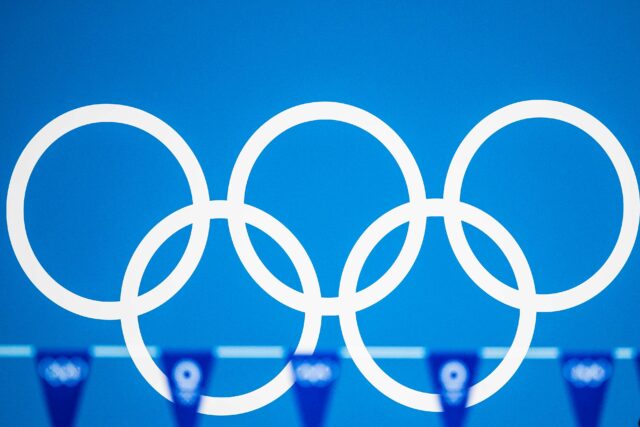
This article originally appeared in the 2024 Olympic Preview edition of SwimSwam Magazine, courtesy of author Aglaia Pezzato. Subscribe to the SwimSwam Magazine here.
In 2022, nearly two years from the beginning of the Paris Games, the new swimming competition program was announced. The schedule was extended and expanded to nine days of competitions, plus two days dedicated to open water marathons. Nine days out of 16 total days of the Olympics. (if we exclude the day dedicated to the opening ceremony and some rounds of tournaments that are held before the official start). Swimming, therefore, occupies more than half of the Olympic time, albeit sharing this space with numerous other sports but knowing that a lot of media attention is focused on the pool finals. Nine days to decree 35 Olympic titles: 17 female, 17 male, and one mixed. The latest addition to the Olympic program was the 4×100 mixed medley, introduced at the Tokyo 2020 edition along with parity in the longer freestyle events that now see both men and women competing in the 800 and 1500.
Although we are now accustomed to thinking and defining some events as Olympic distances, and especially considering with some skepticism those that remain non-Olympic such as the 50 breaststroke, backstroke, or butterfly, we should not imagine that the Olympic program has always been as we see it today — quite the opposite.
Let’s start from the beginning, namely from the first modern edition of the Olympic Games, Athens 1896. On this occasion, there were four swimming events, reserved only for male athletes, like all the other disciplines of this first Olympic edition, which took place on April 11, 1896, in the bay of Zea, in the cold waters (13°C/55°F) and rough sea near Piraeus, Greece. Nearly 20,000 spectators attended the races. The distances in the program were 100 meters, 100 meters for sailors, 500 meters, and 1200 meters.
The swimming race reserved for sailors (exclusively Greek) is a curious competition never repeated in Olympic disciplines. It should be noted that the winner, Ioannis Malokinis, swam the 100-meter freestyle in a time almost double that of Hajós, the winner of the race for the same distance open to all. There was also supposed to be a 500-meter freestyle race for sailors, but it was not held for unknown reasons.
After the first edition of 1896, for a few more years Olympic swimming experimented with distances and types of races that now sound strange to us, such as underwater swimming in Paris 1900, where the result was a score combined from the meters swum and the time of apnea endurance. The discipline had little success because spectators could not see the progress of the race, and it was removed from the program. Paris 1900 was also the only edition for the 200-meter obstacle race, which consisted of climbing a pole, passing over a row of boats, and then swimming back under the boats.
The 1904 edition in St. Louis was the only occasion when races were held in yards, creating Olympic champions with bizarre distances like the 880-yd. freestyle or 440-yd. breaststroke, mostly borrowed from the American standards in athletics at the time (because they were approximately equivalent to their meters-based cousins).
To see women compete in an Olympic program for the first time, we had to wait until 1912, in Stockholm. On that occasion, 27 swimmers representing seven nations made their debut in the only individual race scheduled, the 100 freestyle. Four teams instead took part in the 4×100 freestyle relay.
To see a program truly like what we are used to seeing today, we need to jump to Mexico City 1968 when 11 new events were introduced compared to Tokyo ’64, bringing the total to 15 men’s and 14 women’s events. The only differences remaining were the 800 freestyle reserved for women, the 1500 freestyle for men, and the 4×200 freestyle relay, which was only for men. The 4×200 freestyle relay for women at the Games was introduced in Atlanta 1996.
Currently, the World Championships program differs from the Olympics due to the presence of the 50-meter breaststroke, backstroke, butterfly, and in some continental competitions such as the Europeans, mixed freestyle relays.
We do not know if the IOC will again expand the already very extensive Olympic program, but for sure a lot has changed in the water under the Olympic rings’ shadow.
Read the full story on SwimSwam: 100 Meters For Sailors, Obstacle & Underwater Races: Unknown Disciplines In Olympic Swimming
No comments:
Post a Comment